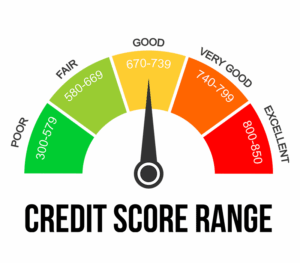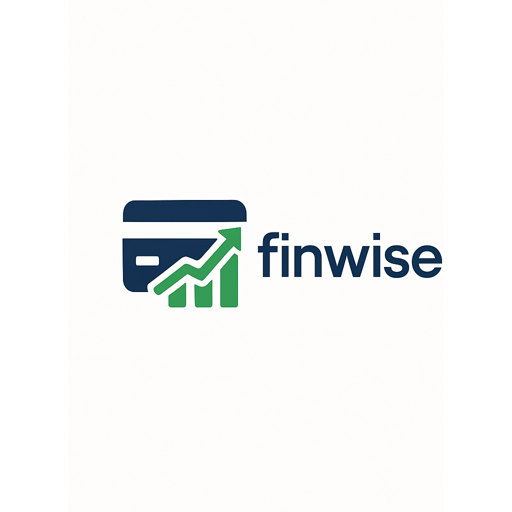Start Automating Your Savings and Investments: Your Shortcut to Financial Independence
We get so caught up with our everyday challenges that personal finance gets pushed to the back of our mind. Even as we set intentions to save and invest and prepare for the long game, life gets in the way. Bills come due, expenses arise, and before long those lofty plans for financial freedom feel a world away. Sound familiar?
How would you like to have your finances automatically taken care of, worth hundreds, collectively thousands of times per year? Enter automation. Take the guesswork out of saving and investing by automating everything. This takes willpower out of the equation entirely, takes away the ability to procrastinate, and it puts your money to work, safely and consistently, without you having to raise a finger.

Why Automation is the Superpower for Your Finances
Consider this: How many times have you tried to move money to savings, but then forgot, or figured you “needed” the money for something else? Automation eliminates the process of having to make those decisions at all. When you automate your saving and spending, then it becomes a non-negotiable expense just like your rent or utility bill.
That is partly why this tactic works so damn well:
Eliminates Impulse Decisions: Many of the money decisions we make can be poor and made with impulse and emotion. Automation divorces the emotion from the equation. Before you even get a chance to consider spending your money, it moves where it belongs.
Makes Sure You Stick With It: While you want to get rich with quickness, accruing wealth is a marathon, not a sprint. Consistency is key. It keeps you on track with your goals, whether that’s weekly, bi-weekly or monthly, by automatically transferring funds so your mood or busy lifestyle can’t get in the way.
Takes advantage of Compound Interest: The sooner and more frequently you start investing, the more time your money will have to grow as a result of compound interest. This is where you start to make money on your money, which leads to a snowballing effect as time goes on. Automation makes sure that you are getting the most out of this principle which is really powerful.
Minimizes Financial Anxiety: By having your financial future automatically taken care of, you can rest considerably easier. You’ll stop stressing about whether you’re saving too much and just focus on how you’ll spend your reward for being such a frugalista.
Fits Within Your Life: Automation isn’t a one-size-fits-all system. You can configure it according to your pay schedule and modify values when your income or expenses fluctuate. It’s flexible and scalable enough to grow with you.
Making Your Money Work On Autopilot
Want to create your own set-it-and-forget-it wealth machine? Let us take a closer look on how to automate your savings and investment the right way:
Define Your Financial Goals
It’s important to be clear before you automate what are the things you are saving and investing for. Are you creating a safety net? Saving for a down payment? Planning for retirement? A dream vacation? Having your objectives well-defined will drive you, if you want a purpose, and decide the amount you will need to save. Set monthly or weekly contributions instead of setting yearly targets.
Choose the Right Accounts
For your automatic transfers, you will require certain accounts.
For Savings:
HYSA — Great place for your emergency fund, money for short-to-medium-term goals. Unlike typical checking accounts, HYSA interest rates are higher, allowing your funds to compound faster while remaining liquid. Be vigilant about searching for online banks, as they generally tend to provide the highest rates and no monthly fees.
For Investments:
Retirement Accounts (401k, 403b, TSP): If your employer has a retirement plan, this is usually the first stop. Automating savings with your employer-contributions are most often taken out of your paycheck before it reaches your bank account, truly the gold standard of automation. In addition, a lot of employers provide matching contribution – free money that you really shouldn’t just leave laying on the table!
Individual Retirement Accounts (IRAs): A Roth IRA or Traditional IRA lets you save for retirement on your own. You can automate transferring money straight from your checking account to the IRA provider of your choice (for example, a company like Vanguard, Fidelity or Charles Schwab).
Brokerage Account: An excellent option for non-retirement long-term goals, a taxable brokerage account. Set up automatic investments in ETFs, mutual funds or stock.
Robo-Advisors: Services such as Betterment or Wealthfront take over your entire investment process. You specify your objectives and appetite for risk, and they do the rest: creating and rebalancing your portfolio and investing your money automatically — often for a tiny fee. A great option for beginners.
Pay Yourself First — Schedule Automatic Transfers
And herein lies the otherwise missing cornerstone of automation. When you receive your salary, immediately transfer a percentage of your earnings to savings and investment accounts.
Via Your Employer: If you can manage it, have a portion of your paycheck directly deposited into your 401k or other employer-sponsored retirement plan. In fact, some employers will permit you to slice your direct deposit, processing some of your pay right to a savings account at another bank.
Through Automated Transfers from Your Primary Checking Account: Schedule monthly automatic transfers from your main checking account to your HYSA, IRA, or brokerage account. Plan these transfers to occur the day following each of your pay days (e.g., when you get paid). All of them accrue over time — even if it is only a small amount, consistently. Begin with a manageable amount that fits your budget, this could be $25, $50 or even $200 per pay period. You can always raise it later.
Set up Automatic Bill and Debt Payments
Automating Bill Payments (Not Savings / Investment per se but still I have added here). Automating Bills helps to ensure that you never miss a payment, which protects your credit score and fees for late payment.
Many regular bills are the same amount every month, so set up automatic payments for all of them: rent/mortgage, utilities, loan payments, credit card minimums and subscriptions.
If you’re aggressively paying off debt with double figure interest rates, set up an automatic payment for your minimum and then schedule another automatic payment for any extra amount you want to apply to the principal.
Review and Adjust Regularly
However, automation is not “set it and forget it” for all time. When everything else changes, so does your financial strategy.
Quarterly or Yearly Reviews: Take a hard look at whether you are progressing towards your goals. Are you on track?
Boost Contributions: Whenever you receive a pay increase, a bonus or you finish paying off a debt, apply some (or all!) of that extra money into your automated savings and investments. This is how to slingshot your money forward.
Turn the Manual into the Automatic: If you have a child, you buy a house or live through just about any major life change, re-evaluate your budget and your automation schedule.
Review and Adjust Regularly
However, automation is not “set it and forget it” for all time. When everything else changes, so does your financial strategy.
Quarterly or Yearly Reviews: Take a hard look at whether you are progressing towards your goals. Are you on track?
Boost Contributions: Whenever you receive a pay increase, a bonus or you finish paying off a debt, apply some (or all!) of that extra money into your automated savings and investments. This is how to slingshot your money forward.
Turn the Manual into the Automatic: If you have a child, you buy a house or live through just about any major life change, re-evaluate your budget and your automation schedule.
The Power of Small Beginnings
Start automating with the resources you have; don’t wait till you think you have “enough” money. You want to make the most impact that you can, and that is done with small, trackable steps consistently over time. You know, even just $50 a month, getting automatically saved or invested, is infinitely better than trying to save $500 and never actually doing so.
Our Post

High Interest Rates, Credit Cards and the U.S. Consumer: What to Know in 2025
The Note: How Decelerating U.S. Economic Growth Affects Using Consumer Credit


